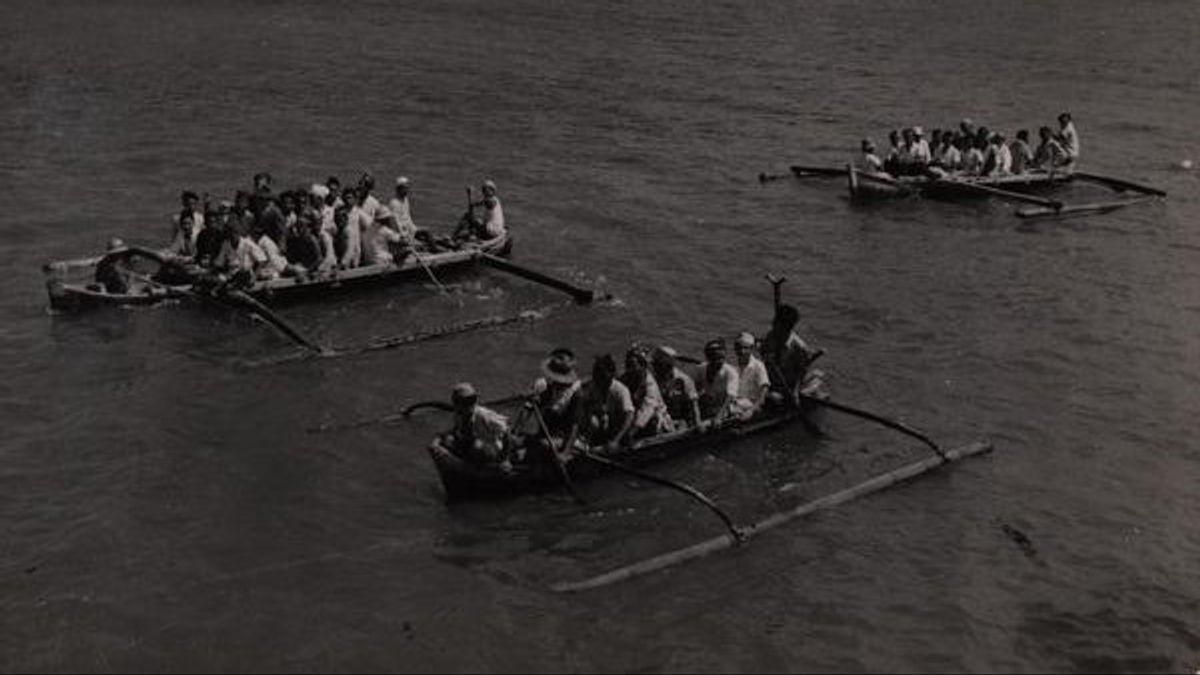JAKARTA - Hajj is an important purpose for Muslims. Especially in Indonesia. In addition to fulfilling the pillars of Islam, Hajj is a marker of social status. But the ancient pilgrimage was clearly different from today. More challenging.
It is not known for sure when Muslims in the archipelago began to perform the pilgrimage. However, there is one name that is recorded in history as the first person from the archipelago to go on pilgrimage. He is Prince Abdul Dohhar, son of Sultan Ageng Tirtayasa of Banten.
Prince Abdul Dohhar went on pilgrimage in 1630. In the years that followed, more and more people went for Hajj. The pilgrimage tradition has even developed into an educational tradition.
People who originally went to Mecca only to perform the pilgrimage later joined in studying Islam. After returning from Mecca, these people brought religious knowledge and taught it in the country.
The challenge of going for the old hajjThe challenges of the pilgrimage are getting tougher every year. Quoted from the book Collection of Snouck Hurgronje's essays Volume VIII by Soedarso Soekarno, one of the challenges faced by pilgrims at that time was worship that took a long time.
At that time, before there was a steamboat, the pilgrims departed for Hajj using sailboats to Aceh. From there they boarded a merchant ship bound for India. There was no ship that directly took them to Mecca.
After from India, they continued their journey by ship to Yemen. If they are lucky, they get a ship that goes directly to Jeddah. This route can take half a year in a single departure.
Another obstacle that must be faced by pilgrims is the sinking of the ship they are carrying, causing the ship's passengers to sink or become stranded on the island. There are also pilgrims whose property is robbed by pirates or even their property is looted by the crew itself so that the intention to make pilgrimage has run aground.

The pilgrimage from the Dutch East Indies began to be facilitated when the Suez Canal was built in 1869. At that time the number of steamboats departing from the Dutch East Indies to Jeddah was increasingly crowded. Not only those who make the pilgrimage but also those who live in Mecca.
As a result, the number of pilgrims who return to the country is more than those who depart. This condition caused concern for the colonial government. Quoted from the book Encyclopaedie van Nederlandsch Indie by EJ Brill and Martius Nijhoff, the authorities in the Dutch East Indies at that time could not supervise the activities of the Dutch East Indies population outside of the pilgrimage.
At that time the thought of Pan Islamism in the Middle East was rife. The Dutch East Indies government was worried that the ideas from this idea would enter the colonies and create a resistance movement in society.
Finally, the Dutch East Indies government opened a consulate in Jeddah in 1872. In addition, the Dutch East Indies government also began to directly handle the pilgrimage process, from departure to repatriation to the country.
At first everything went smoothly. However, as the number of pilgrims increased, Dutch East Indies government ships were no longer able to carry pilgrims. The next decision is to involve the private sector.

However, this involvement has created a new problem. Quoted from the book Hajj Travel Bureau in Colonial Indonesia: Agents Herklots and Firma Alsegoff & Co published by the National Archives of the Republic of Indonesia (ANRI), explained that the door was wide open for the private sector to get involved in handling hajj trips, causing bad consequences.
These private parties took the opportunity to make excessive profits, exceeding the worship intentions of the congregation. This excessive economic orientation resulted in chaos in the private hajj departures. Scavengers have sprung up.
They are people who are assigned to look for as many prospective pilgrims as possible. If the target is achieved, the brokers will receive a reward from the private sector, namely going to Jeddah for free.
On the ship, the activities of these brokers do not stop. They become brokers for the congregation's lodging in the Holy Land. Of course they asked the congregation for extra money. For the wealthy congregation, this problem is easy. But not so for the congregation with mediocre money.
Dirty money from HajjIn the economic context, Hajj is also a business. Dear. Not all businesses are run properly. Various problems overshadowed the problem of hajj in the Dutch East Indies era. At that time the pilgrimage led to intense business competition.
So strict, the pilgrimage is often colored by malicious acts, from monopoly to fraud. In the late 19th and early 20th centuries, hajj travel in the Dutch East Indies was marked by a strong monopoly of business by private hajj travel agencies.
The monopoly was approved by the Dutch East Indies government through the issuance of permits, so that so many congregations were harmed. In the context of fraud, this practice often plunges pilgrims into slavery.
Others, related to giving false Hajj titles to pilgrims who had not even reached Mecca. So many forms of deviation in the management of the pilgrimage at that time.
In fact, many pilgrims have been extorted from their wealth so that they cannot continue the pilgrimage in Mecca. The congregants' money is often only enough for a trip to Singapore. Victims of such fraud are referred to as "Singapore Hajj."
Apart from extortion, private hajj departure agents are also involved in many frauds. One of the depravity that the colonial government highlighted the most was that of the hajj travel agent Herklots and the Alsegoff Firm.
The establishment of the Hajj travel agency, Herklots, was pioneered by YGM Herklots. He is an Indo-European born in Java. Herklots runs its business by chartering fireboats. Herklots' career began when he left for Jeddah on February 27, 1893.
As we discussed in the article on the Dutch Age Hajj, at that time he went to Jeddah on behalf of the Knowles & Co Firm in Batavia. In running his crafty business, he is assisted by his brother, WH Herklots.
Arriving in Jeddah, the Herklots brothers set up their own Hajj bureau. After obtaining permission from the local government, the legality that has been pocketed has further paved the way for the Herklots brothers to make profits through the sacred ritual of the pilgrimage.
The trick is to ask the congregation for additional money beyond the set fee. Herklots' mischief caused a lot of people to lose money. Herklots was also involved in slavery and other crimes.
*Read other information about HISTORY or read other interesting writings from Sadam.
Other MEMORIESThe English, Chinese, Japanese, Arabic, and French versions are automatically generated by the AI. So there may still be inaccuracies in translating, please always see Indonesian as our main language. (system supported by DigitalSiber.id)









